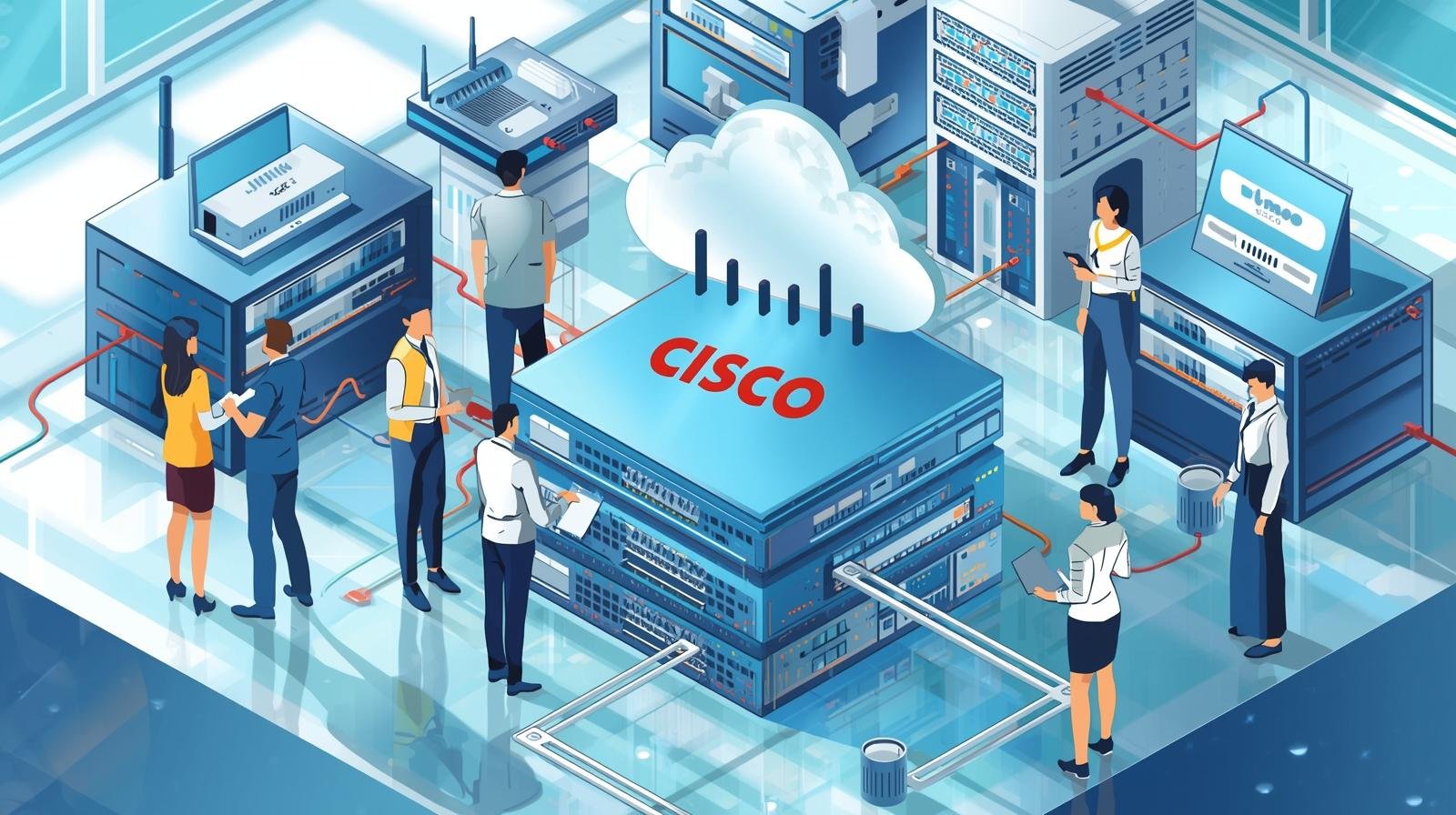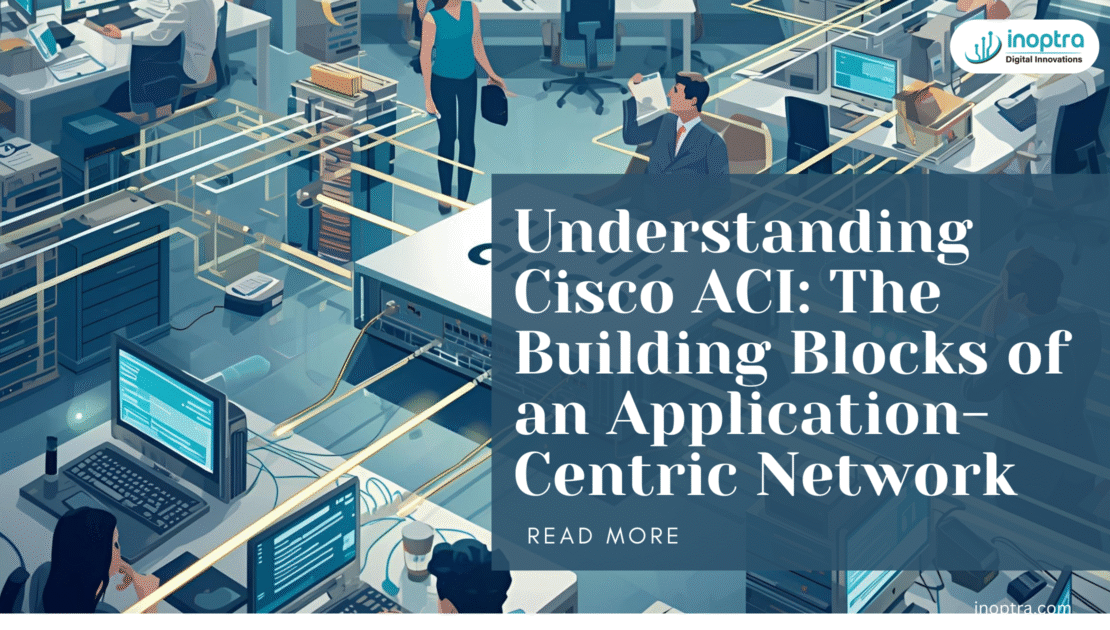What’s in the blog:
Transform your network from a cost center into a strategic business asset.
Is your network holding your business back? In today’s fast-paced digital world, your ability to deploy applications quickly, securely, and reliably is a direct measure of your success. Yet, many organizations are still wrestling with networks built on a decades-old mindset. These networks are complex, rigid, and managed manually, making every new application deployment a slow, error-prone process.
Imagine trying to build a modern city by planning one road at a time, without a master blueprint. It would be chaotic, inefficient, and impossible to manage as it grows. This is what traditional networking feels like.
Now, imagine a city designed with a central plan. You have zones for residential, commercial, and industrial areas. You have a highway system that connects everything efficiently, and clear rules (zoning laws) that govern what can be built where and how traffic can flow between zones. This is the promise of Cisco’s Application Centric Infrastructure (ACI).
This blog post will demystify Cisco ACI, breaking down its core building blocks in simple terms. More importantly, we’ll show you how this revolutionary approach transforms your network from a complicated plumbing project into a strategic business asset that drives speed, security, and simplicity.

The Old Way: A Network of Silos and Manual Labor
Before we dive into ACI, let’s quickly look at the traditional network. For years, networks have been built device-by-device. Network engineers would manually configure individual switches, routers, and firewalls using command-line interfaces (CLI). They’d create VLANs, set up ACLs, and manage routing protocols on a box-by-box basis.
This approach has several major problems:
- It’s Slow: Deploying a new application requires coordination between server, storage, security, and network teams, each with their own manual processes. What should take minutes can take weeks.
- It’s Error-Prone: Manual configuration is a leading cause of network outages. A single typo on a single device can bring a critical application to its knees.
- It’s Inflexible: The network is tightly coupled to the underlying hardware. Moving an application from the data center to the cloud, or even just between servers, requires a complete rework of network policies.
- Security is an Afterthought: Security policies are often bolted on at the perimeter with firewalls, leaving the inside of the network flat and vulnerable. If an attacker gets inside, they can move around freely.
Enter Cisco ACI: Thinking About the “What,” Not the “How”
Cisco ACI flips this model on its head. Instead of focusing on the network hardware, ACI is Application-Centric. This means you define your network policies based on the needs of your applications, not the capabilities of your switches.
With ACI, you stop telling the network how to do its job (e.g., “configure this port on this switch with this VLAN”) and start telling it what you want to achieve (e.g., “The web server group needs to talk to the database group on port 3306, and nothing else is allowed”).
This is achieved through a powerful concept called policy-based automation. You create a single, holistic “blueprint” for your application’s connectivity and security requirements, and the ACI system automatically configures the entire network infrastructure to enforce it.

The Four Building Blocks of Cisco ACI
To understand how this magic happens, let’s look at the four key components that make up an ACI fabric.
1. The Application Policy Infrastructure Controller (APIC): The Brain
The APIC is the central command and control center of the ACI fabric. Think of it as the master planner or the city’s central control room. It’s not a traditional data plane device that your traffic flows through; instead, it’s the management and policy engine.
You interact with the APIC through a user-friendly graphical interface. This is where you define your application blueprints, monitor the health of your entire fabric, and manage policies. The APIC then translates these high-level policies into the specific, low-level configurations needed by every switch in the network. This single pane of glass eliminates the need for manual, box-by-box configuration, drastically reducing complexity and human error.
2. The ACI Fabric (Leaf-Spine): The Highway System
The ACI Fabric is the underlying network hardware, but it’s built in a modern, highly efficient way. Instead of a complex, hierarchical design with many layers of switches, ACI uses a leaf-spine architecture.
- Leaf Switches are like the local on-ramps and off-ramps in our city. They connect to all your endpoints—servers, storage, firewalls, and other devices.
- Spine Switches are the high-speed backbone highways. Their only job is to connect the leaf switches, ensuring that any two endpoints can communicate with each other in a fast, predictable way.
This design is incredibly simple, scalable, and resilient. It eliminates the need for old protocols like Spanning Tree Protocol, which were designed to prevent network loops but often resulted in wasted bandwidth and slow convergence.
3. Endpoint Groups (EPGs): The City’s Zones
This is perhaps the most powerful concept in ACI. An Endpoint Group (EPG) is a logical collection of similar endpoints that require the same network policies. An endpoint can be a physical server, a virtual machine (VM), a container, or even a connection to another network.
Instead of grouping devices by IP address or VLAN, you group them by their function in an application. For example, you might have an EPG for “Web-Servers,” another for “App-Servers,” and a third for “Database-Servers.”
The beauty of EPGs is their abstraction. You don’t care if a web server is a physical server in rack A1 or a VM running on a hypervisor. As long as it’s part of the “Web-Servers” EPG, it gets the exact same network and security policies. This makes moving applications and scaling them incredibly simple.
4. Contracts: The Zoning Laws and Traffic Rules
How do you control communication between your EPGs? With Contracts.
A contract is a policy that defines exactly what communication is allowed between EPGs. It’s like a set of zoning laws or traffic rules. For example, you could create a contract that says:
- Source: Web-Servers EPG
- Destination: App-Servers EPG
- Allowed Traffic: Port 8080 (TCP)
This contract means that any server in the Web-Servers EPG can communicate with any server in the App-Servers EPG, but only on port 8080. All other traffic is automatically denied by default. This “whitelist” approach is a foundational principle of zero-trust security.
Contracts allow you to implement micro-segmentation—creating tiny, secure perimeters around every application tier. Even if an attacker compromises a web server, they are trapped. They can’t access the database or move laterally to other parts of the network because the contract explicitly forbids it. Security is no longer just at the edge; it’s embedded everywhere.

What This Means for Your Business: The Payoff
So, what do these building blocks actually deliver for your organization?
- Radical Speed and Agility: Deploy new applications in minutes, not weeks. Provision network and security policies for thousands of endpoints with a few clicks. Respond to business needs at the speed of thought.
- Bulletproof Security: Move from a perimeter-based defense to a zero-trust model with built-in micro-segmentation. Drastically reduce your attack surface and contain breaches before they spread.
- Simplified Operations and Lower Costs: Automate manual tasks, eliminate configuration errors, and gain complete visibility into your network and application health from a single dashboard. Free up your valuable IT staff to focus on innovation instead of firefighting.
- A Future-Ready, Hybrid Cloud Network: ACI is not just for the data center. It extends its consistent policies seamlessly to public clouds like AWS and Azure, giving you a unified, secure network across your entire hybrid environment.
Ready to Build Your Smart Network?
Cisco ACI is more than just a networking product; it’s a fundamental shift in how we think about and manage IT infrastructure. It transforms the network from a passive, complicated utility into an active, intelligent, and automated engine for business growth. InOpTra goes beyond traditional networking solutions—it’s a strategic enabler for modern IT infrastructure. By turning your network into an intelligent, automated, and secure platform, InOpTra helps eliminate bottlenecks, enhance multi-cloud security, and empower your IT teams to focus on innovation rather than maintenance.
If your current network is slowing you down, if security across cloud environments is a concern, and if you’re ready to unlock real business value from your infrastructure—InOpTra is your partner in transformation.


